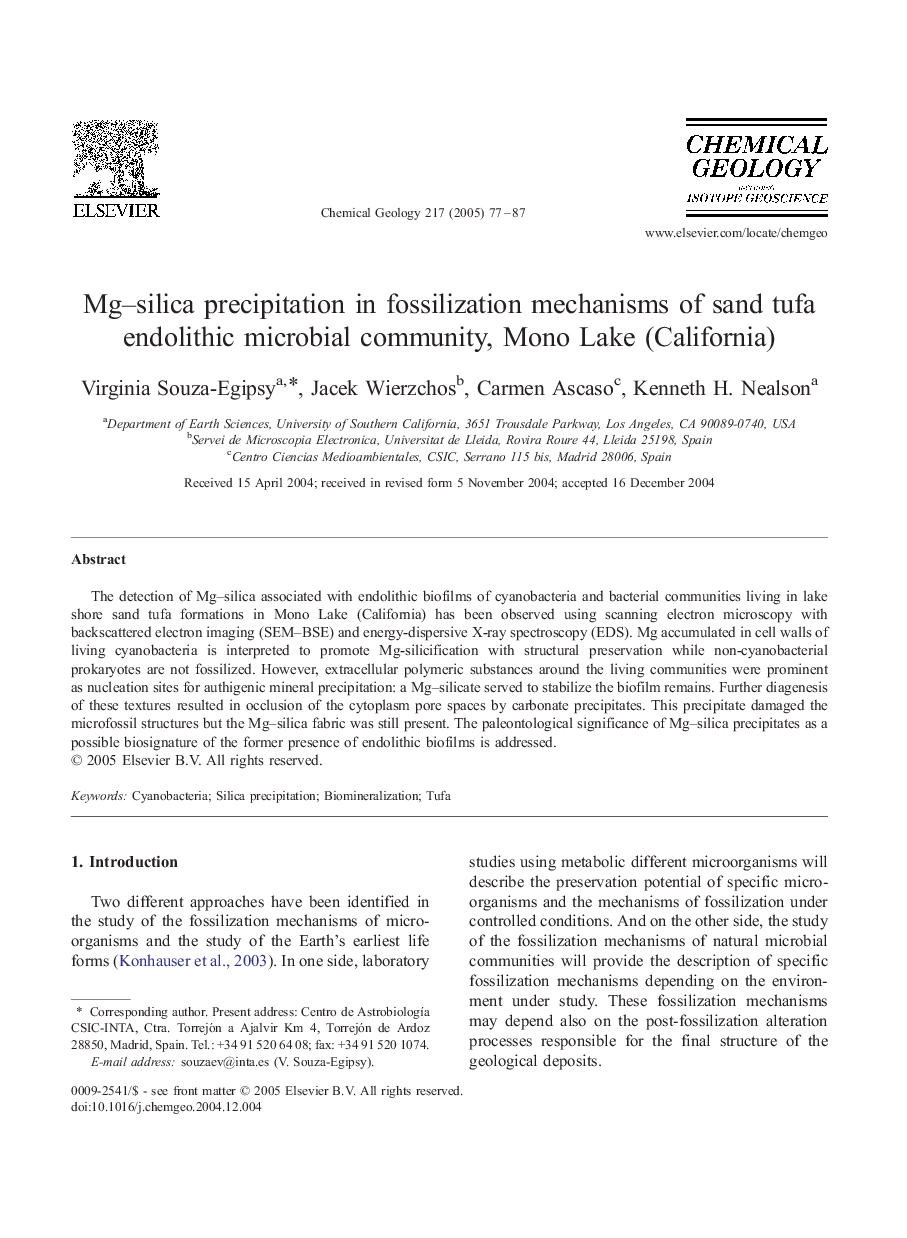| Article ID | Journal | Published Year | Pages | File Type |
|---|---|---|---|---|
| 9529054 | Chemical Geology | 2005 | 11 Pages |
Abstract
The detection of Mg-silica associated with endolithic biofilms of cyanobacteria and bacterial communities living in lake shore sand tufa formations in Mono Lake (California) has been observed using scanning electron microscopy with backscattered electron imaging (SEM-BSE) and energy-dispersive X-ray spectroscopy (EDS). Mg accumulated in cell walls of living cyanobacteria is interpreted to promote Mg-silicification with structural preservation while non-cyanobacterial prokaryotes are not fossilized. However, extracellular polymeric substances around the living communities were prominent as nucleation sites for authigenic mineral precipitation: a Mg-silicate served to stabilize the biofilm remains. Further diagenesis of these textures resulted in occlusion of the cytoplasm pore spaces by carbonate precipitates. This precipitate damaged the microfossil structures but the Mg-silica fabric was still present. The paleontological significance of Mg-silica precipitates as a possible biosignature of the former presence of endolithic biofilms is addressed.
Related Topics
Physical Sciences and Engineering
Earth and Planetary Sciences
Geochemistry and Petrology
Authors
Virginia Souza-Egipsy, Jacek Wierzchos, Carmen Ascaso, Kenneth H. Nealson,
